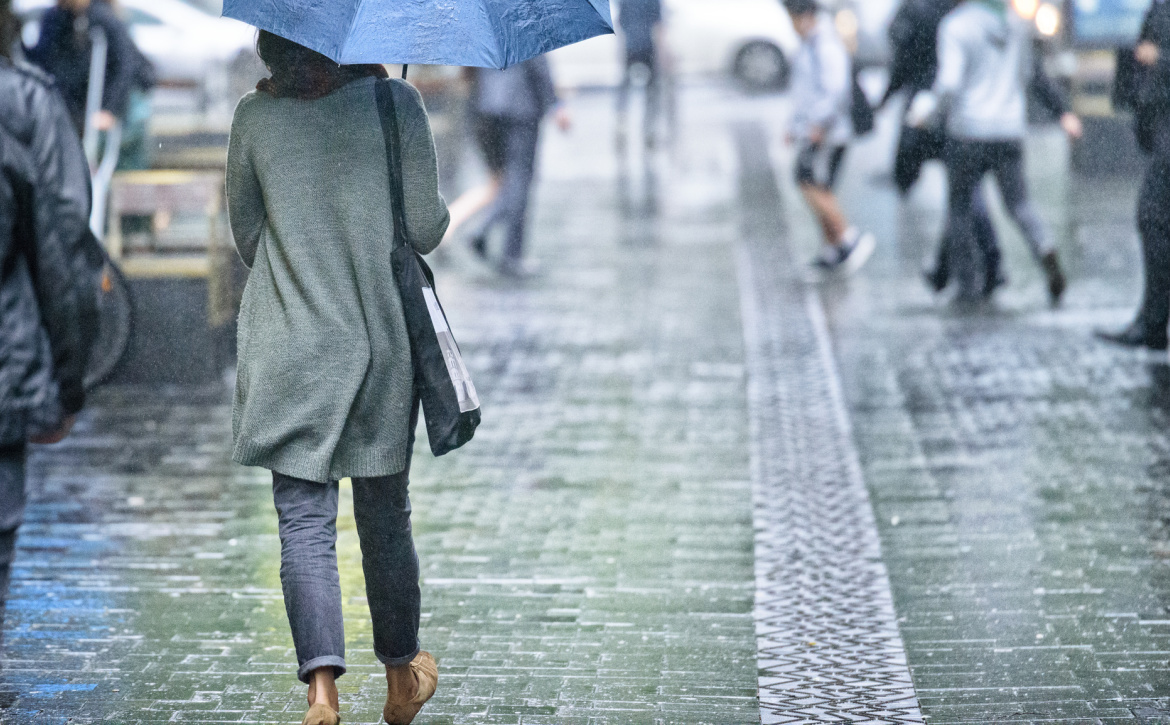A recent decision on appeal awarding damages for a domestic “slip and fall” is a warning to homeowners, insurers and underwriters alike. Familiarity with the premises and constructive knowledge of “degrees of slipperiness” as determined by an expert witness meant the owners of this Campbelltown property did not discharge the duty of care owed to their visitor.
Background
At around 6.30pm on 5 February 2010, Sheran Ann Schultz visited her good friends, the McCormacks, for dinner at their home in the Sydney suburb of Campbelltown. On her arrival, the weather was overcast but dry; however, during the evening it rained. When Ms Schultz left the McCormacks’ home around midnight, as she stood on their tiled verandah she noticed that the concrete path and some lower steps were damp and that a nearby car was a bit wet. (She later conceded that she realised it had rained). Although the verandah was covered, Ms Schultz did not realise that the edge had become wet. Ms Schultz kissed Mrs McCormack goodbye, then turned to proceed down the steps. She was wearing rubber thongs and in the process she slipped and fell, badly fracturing her right ankle.
There was an overhead light on the verandah that on one view illuminated the general area. There was disagreement as to whether the light was above or behind her (relevant to shadow casting). There was no handrail1. The McCormacks had owned the home since 1980. They retiled the verandah in 2004/2005. Neither had noticed any slipperiness in dry or wet weather and there had been no accidents. Ms Schultz had been to the McCormacks’ home on many occasions prior, as had her husband. Neither had experienced any slipperiness on the verandah or stairs. Expert evidence of Mr Neil Adams was that the tiles had an adequate friction co-efficiency when dry, but an inadequate friction co-efficiency when wet2.
Primary decision3
Ms Schultz (“the appellant”) failed in her claim for damages before his Honour Justice Levy, who concluded:
- there was no evidence to permit a reasonable inference that the McCormacks (“the respondents”) either knew or ought to have known there was an inadequate friction co-efficiency when wet
- there was no reason for them to take any precautions against the risk of slipping
- there was no duty to warn the appellant and
- therefore the respondents had not breached their duty of care to her as occupiers.
As to obvious risk, his Honour held that it must have been obvious to the appellant that there was a reasonable possibility that the area could be wet and slippery. Further, she ought to have known of that possibility before commencing her descent. She ought to have realised that rain could have been blown in to the verandah. His Honour rejected Mr Adams’ opinion that the verandah light would have been behind her casting a shadow immediately in front of her and over the tiled surface. (The appellant had not given any evidence that a shadow impaired her sight). His Honour concluded that Mr Adams’ opinion was unproven speculation, holdingthat as it would have been obvious to a reasonable person in the position of the appellant that the tiles could have been wet and as such posed a risk of slipping, the respondents did not have a duty of care to warn her of such an obvious risk. As to credit, his Honour noted that nothing of significance turned on his finding that – contrary to their denial – the respondents had told the plaintiff to make a claim on their insurance.
Notionally, his Honour assessed contributory negligence of at least 50% in light of the appellant’s failure to pause and look where she was about to place her foot before descending.
On appeal
The appellant succeeded on appeal and was awarded $750,000.00 in damages, with no reduction for contributory negligence4.
The issues considered on appeal were:
Was risk properly characterised for the purposes of section 5B of the CLA?
Almost While the foreseeable and not-insignificant risk identified at trial was of slipping on a wet tiled veranda, it was held that the particular and relevant risk was that the verandah would have been abnormally slippery when wet and in circumstances where it was not reasonable to expect the appellant to notice and react to such risk. (Neither respondent had ever noted the verandah being slippery (or abnormally slippery) when wet5). Further, the risk only eventuated due to rain being blown onto the verandah – being a risk deemed within the knowledge of the respondents but not the appellant.
It was held that the respondents had breached the duty of care they owed to the appellant because they omitted to warn the appellant the verandah would have become wet if rain had blown in during the evening and, as a result it would have become abnormally slippery. The risk was defined by reference to Mr Adams’ expert opinion.
Was the risk obvious?
No. It was unreasonable and unrealistic to conclude that a reasonable person in the appellant’s position would or could have perceived that part of the covered verandah could be wet due to wind-blown rain and, if wet, unusually slippery. The trial judge’s conclusion (that a reasonable person in the appellant’s position should have appreciated the roof over the verandah may not have fully protected the tiled floor from rain) was not open to him. The trial judge had erred in analysing the issue of obvious risk by reference to the appellant’s stated observations6, rather than by enquiring into the perceptions of a hypothetical reasonable person in the appellant’s position. In addition, such a hypothetical reasonable person would (in accordance with the expert evidence of Mr Adams but contrary to the plaintiff’s own evidence) have been affected by a shadow cast from the landing light behind.7.
Interestingly, the Court of Appeal concluded that, while the ability of a reasonable person in the appellant’s position to perceive the condition (of the veranda) was obscured to the extent that the person’s shadow would fall on the area he/she was approaching, to some extent further enquiry was academic as the appellant’s evidence was, in substance, that she turned and slipped almost immediately so that there was no real opportunity for her to see the state of the porch in the circumstances of her fall. On the premise that s 5F (1) requires the Court to have regard to the mechanics of the accident, Mr Adams’ opinion may not be of any utility.8
Relevantly, it was held that any knowledge that the appellant would have acquired while taking care to look ahead would not have been more than the knowledge of the respondents – which was that the verandah and steps had never posed a problem in the past (wet or dry) and there was no reason to anticipate a slip. In other words, it was incongruous to hold that a visitor acting reasonably would have perceived as obvious a risk that the respondents (occupiers and owners) denied all knowledge of.
Issue 3: Were the respondents negligent?
Yes. Of relevance, because the appellant had been preferred over the respondents in relation to whether they told her to make a claim (something they denied saying), the court considered that such finding amounted to adverse credit which was of wider significance in the context of liability and had been incorrectly discounted by the trial judge.
It was held that a reasonable person in the respondents’ position ought to have warned the appellant that rain could have blown into the verandah and could have made the tiles slippery – even though the respondents’ evidence was that they did not think the tiles were slippery when either wet or dry. McColl JA went further and opined (without support) that matting should have been placed on the verandah.9
Based on Mr Adams’ unchallenged evidence as to slipperiness, it was held that occupants of a house with tiled surfaces with that degree of slipperiness ought to have realised that that was the case bearing in mind that the tiles had been in place for five or six years10. The respondents had unsuccessfully argued that such constructive proposition should not be preferred in circumstances where their evidence was that they did not realise the tiles were very slippery when wet. It was held that because expert evidence indicated the tiles were not of sufficient friction co-efficiency when wet, a reasonable inference could be drawn that the respondents knew or ought to have known this – and were therefore deemed aware of what was held to be a foreseeable risk.11.
MacFarlan JA opined that the respondents ought to have realised that the veranda was excessively slippery when wet as a result of their 5 or 6 years of use. He further surmised that the McCormacks may have grown accustomed to the slipperiness over time, or come subconsciously to take particular care using the steps and landing as a result of some past incident(s) now forgotten. Or they may have had a different view to Mr Adams as to what constituted slippery tiles12.
Beech-Jones JA opined that a surface with a coefficient of friction of less than 0.4 and even at 0.29 was not necessarily dangerous or excessively slippery. What mattered was the resistance of the footwear, physical characteristics, and expectation of surface. A surface of 0.29 in wet conditions has potential to be a hazard if the person previously experienced a higher resistance on that surface in dry conditions and does not know or cannot be reasonably expected to know that it is wet…the existence of a “mismatch” as described by Mr Adams is at the heart of the circumstances that transpired…the appellant did not know and could not reasonably be expected to have known that the tiles on the top of the landing were wet, whereas Mr McCormack knew it was likely (and should have warned her).13
Was there contributory negligence?
No. As the appellant was exposed to a risk which she did not know or ought to have known, there was no contributory negligence on her part.
Was an award for domestic assistance at commercial rates for 6 hours per week for life unreasonable? (cross appeal)
No. By way of cross-appeal, the respondents complained that past and future care had been assessed without having proper regard to “section 15 of the CLA and objective evidence. The Court of Appeal confirmed the appellant’s entitlement to 6 hours of weekly care at commercial rates for life and held that the question whether she had established there was a reasonable need for domestic services was an evaluative exercise. The respondents had submitted that in accordance with section 15(2) of the CLA there had to be objective evidence to support the appellant’s claim. Damages for non-economic loss were assessed at 38% of a most extreme case. Confirming the court below, it was held that while medico-legal opinions of Dr Conrad and Dr Rea provided a measure of support for the claim, it was the appellant’s own evidence that reasonably justified the claim. The appellant was aged 59 at the time of trial. She had prior health conditions. The Court of Appeal did not disturb the trial judge’s findings and noted that medical opinions are not prescriptive…the evidence of the plaintiff was more accurately indicative of her accident-related needs…which evidence was satisfactory on the issue…with no need for that evidence to be validated by objective evidence or medical evidence; and further the evidence of the plaintiff and her husband provided a satisfactory basis for acceptance of the claim for 6 hours domestic assistance per week into the future.
Take home points
- Not knowing about a slip hazard is not a valid excuse for home owners. Familiarity with domestic property is sufficient for ‘deemed knowledge’ of a slip hazard – as identified subsequently by expert evidence – and triggers a duty to warn.
- The need for future domestic assistance even at commercial rates is an evaluative exercise and can be assessed without reference to objective medical evidence.
1 The steps were not of sufficient number or rise that one was required.
2 Schultz v McCormack [2014] NSWDC 67, his Honour commented at paragraph 71 that Mr Adams’ opinion did not appear to be based on any recognised standard that applied to domestic premises.
3 Ibid
4 Schultz v McCormack [2015] NSWCA 330
5 Comment: whether ‘slippery’ or ‘abnormally slippery’, the outcome (of slipping and falling) is the same.
6 The appellant had observed the footpath to be damp and a nearby car to be a bit wet.
7 (i) The appellant’s evidence was that her line of sight was unaffected by shadow casting. (ii) Mr Adams expressed opinion unsupported by measurements, calculation or shadow drawings.
8 Schultz v McCormack [2015] NSWCA 330, McColl JA at 105
9 Comment: (i) matting could present a slip hazard because it would not have negated the accepted hazard created by having to move from one type of surface (matted veranda) to another (wet slippery tiled steps). (ii) as noted by the trial judge, matting was unlikely to alter the fact that the appellant did not look where she was placing her feet.
10 Schultz v McCormack [2015] NSWCA 330, McColl JA at 115
11 Ibid, McColl JA at 117
12 Ibid, MacFarlan J at 138
13 Ibid, Beech-Jones at 148, 149 and 150.











